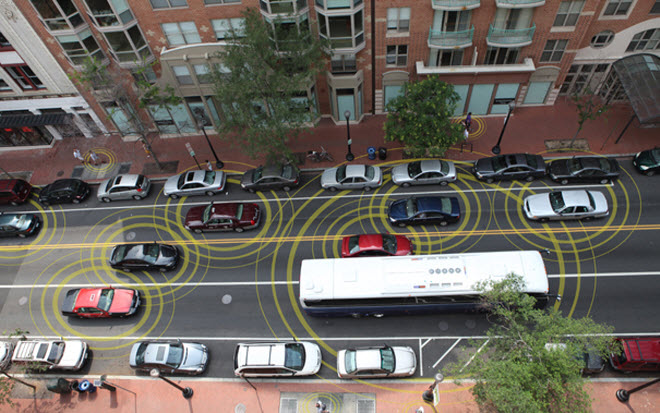5 IoT Challenges for Connected Car Development
Growth in adoption of connected cars has exploded as of late, and is showing no signs of slowing down, especially the vehicle-to-infrastructure and vehicle-to-retail segments. As adoption grows exponentially, the challenges in how we develop these ap...
By Joe Hanson
Growth in adoption of connected cars has exploded as of late, and is showing no signs of slowing down, especially the vehicle-to-infrastructure and vehicle-to-retail segments. As adoption grows exponentially, the challenges in how we develop these apps emerge as well. One of the biggest challenges to consider will be connectivity, and how we connect and network the millions of connected cars on the road. How can we ensure that data gets from Point A to Point B reliably? How can we ensure that data transfer is secure? And how do we deal with power, battery, and bandwidth constraints?

1. Signaling
At the core of a connected car solution is bidirectional data streaming between connected cars, servers, and client applications. Connected car revolves around keeping low-powered, low-cost sockets open to send and receive data. This data can include navigation, traffic, tracking, vehicle health and state (Presence); pretty much anything you want to do with connected car. Signaling is easy in the lab, but challenging in the wild. There are an infinite amount of speed bumps (pun intended) for connected cars, from tunnels to bad network connectivity, so reliable connectivity is paramount. Data needs to be cached, replicated, and most importantly sent in realtime between connected cars, servers, and clients.
2. Security
Then there's security, and we all know the importance of that when it comes to connected car (and the Internet of Things in general). Data encryption (AES and SSL), authentication, and data channel access control are the major IoT data security components.In looking at data channel access control, having fine-grain publish and subscribe permissions down to individual channel or user is a powerful tool for IoT security. It enables developers to create, restrict, and close open channels between client apps, connected car, and servers. With connected car, IoT developers can build point-to-point applications, where data streams bidirectionally between devices. Having the ability to grant and revoke access to user connection is just another security layer on top of AES and SSL encryption.

3. Power and Battery Consumption
How will we balance the maintaining of open sockets and ensuring high performance while minimizing power and battery consumption? As with other mobile applications, for the connected car, power and battery consumption considerations are essential. M2M publish/subscribe messaging protocols like MQTT are built for just this, to ensure delivery in bandwidth, high latency, and unreliable environments. MQTT specializes in messaging for always-on, low-powered devices, a perfect fit for connected car developers.
4. Presence
Connected devices are expensive, so we need a way to keep tabs on our connected cars, whether it be for fleet and freight management, taxi dispatch, or geolocation. 'Presence' functionality is a way to monitor individual or groups of IoT devices in realtime, and has found adoption across the connected car space. Developers can build custom vehicle states, and monitor those in realtime as they go online/offline, change state, etc.Take fleet management for example. When delivery trucks are out on route, their capacity status is reflected in realtime with a presence system. For taxi and dispatch, the dispatch system knows when a taxi is available or when its currently full. And with geolocation, location data is updated by the millisecond, which can also be applied to taxi dispatch and freight management.
5. Bandwidth Consumption
Just like power and battery, bandwidth consumption is the fifth connected car challenge we face today. For bidirectional communication, we need open socket connections, but we can't have them using massive loads of bandwidth. Leveraging M2M messaging protocols like the aforementioned MQTT lets us do just that. Building the connected car on a data messaging system with low overhead, we can keep socket connections open with limited bandwidth consumption. Rather than hitting the servers once multiple times per second, keeping an open socket allows data to stream bidirectionally without requiring requests to the server.
Solution Kit for Connected Cars
The PubNub Connected Car Solution Kit makes it easy to reliably send and receive data streams from your connected car, facilitating dispatch, fleet management applications and personalized auto management apps. PubNub provides the realtime data stream infrastructure that can bring connected car projects from prototype to production without scalability issues.
This blog post was originally published to the Atmel blog Bits & Pieces from the Embedded Design World.
By Joe Hanson
Re-use is only permitted for informational and non-commerical or personal use only.

